Adrian Collins's Blog, page 137
May 17, 2022
REVIEW: The Heron Kings’ Flight by Eric Lewis
The Heron Kings’ Flight is the second novel in Eric Lewis’ The Heron Kings series. I would like to thank independent publishing house Flame Tree Press and Eric Lewis for sending me an eARC of the novel so that I can review The Heron Kings’ Flight for Grimdark Magazine.
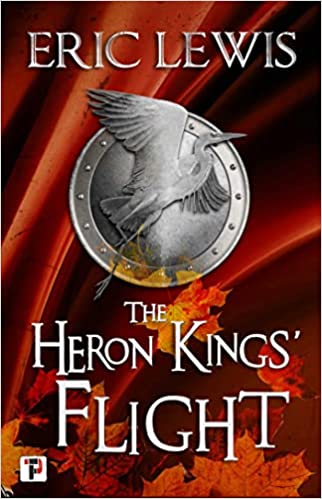 The Heron Kings’ Flight is set in the same medieval low fantasy world as its predecessor but the events of this novel take place a century on from its conclusion. So although reading The Heron Kings may help you to understand the history or geography of this world, it is not essential pre reading. The Heron Kings’ Flight can stand on its own and be enjoyed as the introduction to Lewis’ world if you have not already discovered this series.
The Heron Kings’ Flight is set in the same medieval low fantasy world as its predecessor but the events of this novel take place a century on from its conclusion. So although reading The Heron Kings may help you to understand the history or geography of this world, it is not essential pre reading. The Heron Kings’ Flight can stand on its own and be enjoyed as the introduction to Lewis’ world if you have not already discovered this series.
Due to the time jump, all of the characters of The Heron Kings’ Flight are new, though there are some nice nods to some of the key characters from the first novel. Our main characters in this instalment are Linnet and Aerrus who are young members of the Heron Kings. The titular band of guerrilla fighters from the first novel has grown into a more organised guild of forest rangers. They have an uneasy truce with the crown and work in the shadows to protect those in need. The Heron Kings have become a forgotten legend in the century of peace and even those they have been helping do not really believe in them after all this time. The betrayal of the Heron Kings and the impending invasion of their surrounding lands threatens this existence and Linnet and Aeruss, along with former soldier Eyvind, have to discover the traitor and try to form a new resistance against the invading god emperor Phynagoras.
I enjoyed Lewis’ writing style in The Heron Kings’ Flight. Much like its preceding novel Lewis has written a clear and concise story, I was never confused as to where we were in the world or what was going on. It still has the dark humour and witty character conversations that I liked and, as with before, the exchanges between characters are where the reader gets the majority of their world building information.
There is also a distinctive difference in Lewis’ descriptions of the violent events in the novel. The Heron Kings’ Flight is still set in an exceptionally brutal and violent world, but this violence is no longer hyperbolic in its extreme. However the explicit and gruesome depictions of violence (including rape) will be too much for some readers and I think are deliberately described to show the harrowing atrocities that humans are capable of committing against one another. There is no fantastical ‘bad guy’ who can be blamed for the events in Lewis’ world; the savagery is entirely down to the choices made by the characters. I did find some of this very hard to stomach and personally would prefer the escapism of more fantasy elements.
However The Heron Kings’ Flight is not relentlessly dark and there are some very humorous or touching lighter moments. The characters and their arcs are engaging and, certainly for the main trio, relatable and mostly likable. There are layers of political intrigue and subterfuge as well as fast paced action. The Heron Kings’ Flight is not for the faint hearted but I think would appeal to fans of medieval style fantasy worlds with a high threshold for gritty and realistic gore. 3.5/5.
Read The Heron King’s Flight by Eric LewisThe post REVIEW: The Heron Kings’ Flight by Eric Lewis appeared first on Grimdark Magazine.
REVIEW: Daughter of Redwinter by Ed McDonald
The GdM faithful will probably be familiar with author Ed McDonald from his brilliant, bestselling Raven’s Mark trilogy. His latest offering is Daughter of Redwinter which sets its own, distinct flavour from the opening. Does that mean a departure from everything dark and ominous that we hold dear in our fiction, I hear you ask? Hell no.
 To begin with there’s Raine, our protagonist. From the very beginning of the riveting first chapter, we learn that she can see the dead. That is, she can see the restless dead; those who have been unable to find peace in the afterlife. Whilst this may seem like a useful gift at first, there are caveats. She inhabits a world where the crown and the chivalric class (known as Draoihn) view such skills as punishable by death. A fact which hangs like an impending blade over Raine throughout. She has to be one of my favourite protagonists in recent years. She’s gloriously flawed and cursed with a knack for making terrible decisions which both she and those close to her live to rue. But that is easily forgiven because she is so young and personally it made me care about her even more and need to see her succeed.
To begin with there’s Raine, our protagonist. From the very beginning of the riveting first chapter, we learn that she can see the dead. That is, she can see the restless dead; those who have been unable to find peace in the afterlife. Whilst this may seem like a useful gift at first, there are caveats. She inhabits a world where the crown and the chivalric class (known as Draoihn) view such skills as punishable by death. A fact which hangs like an impending blade over Raine throughout. She has to be one of my favourite protagonists in recent years. She’s gloriously flawed and cursed with a knack for making terrible decisions which both she and those close to her live to rue. But that is easily forgiven because she is so young and personally it made me care about her even more and need to see her succeed.
After the mesmeric opening scene and a short yet perilous journey, Raine finds herself living within the titular Redwinter (the citadel of the Draoihn). There, the main part of the story unfolds and the threats which the first act hinted at become real and immediate. Her abilities start to become clear but it is unclear to all whether they will prove to be Raine’s undoing or the saviour of an entire nation. Tropes are used skilfully in Daughter of Redwinter and a variety of creatures and adversaries come to life in Raine’s new home. The world-building is spot on – just the right amount is revealed at the tip of this iceberg to suggest a vast imagining (which should contain plenty to make this another well received series) without sacrificing reader interest. What I particularly enjoyed was the distinction between the physical world around the characters and the concealed one which only the most gifted Draoihn and their apprentices can ascend to – known as ‘gates’.
One of the main facets that made Daughter of Redwinter an excellent read for me though was McDonald’s crisp prose. His style is excellent and immensely quotable. His descriptive passages really immerse the reader in his world whilst at the same time being clean, original and concise. Not a sentence is wasted. Similarly, the author’s passion for and expertise in the HEMA martial arts world serves him well. One of his skills is using this knowledge to craft exciting, realistic battle scenes without the terminology becoming overbearing.
 As with Blackwing (McDonald’s previous series opener), a strength is in the depth of the supporting characters and the relationships which form between them. One of Raine’s main challenges is to learn fast whom she can trust. Is the level-headed Sanvaunt all he seems? Do clan heir Ovitus’ flaws run as deep as they seem and will they be as problematic as we suspect they are? I particularly enjoyed seeing the friendship with Esher blossom and wonder where this will lead in the next instalments as it has proven pretty influential on the story thus far. Hess provides an intriguing worldview and provides a nice gateway into a literal underworld and subplot as well.
As with Blackwing (McDonald’s previous series opener), a strength is in the depth of the supporting characters and the relationships which form between them. One of Raine’s main challenges is to learn fast whom she can trust. Is the level-headed Sanvaunt all he seems? Do clan heir Ovitus’ flaws run as deep as they seem and will they be as problematic as we suspect they are? I particularly enjoyed seeing the friendship with Esher blossom and wonder where this will lead in the next instalments as it has proven pretty influential on the story thus far. Hess provides an intriguing worldview and provides a nice gateway into a literal underworld and subplot as well.
Overall this piece signifies a change of tone; something different from its highly successful predecessor. It isn’t as dark in its pitch or mood but it certainly has its moments as is still bathed in grit and ambiguous, 3D characterisation.
Daughter of Redwinter is an outstanding opening for what deserves to be another phenomenally successful series for Ed McDonald. Once again he has taken us to a world which oozes menace and enthrals with beautifully imperfect characters and its own rich, dark mythology. A must devour read for the summer of ‘22.
Read Daughter of Redwinter by Ed McDonaldThe post REVIEW: Daughter of Redwinter by Ed McDonald appeared first on Grimdark Magazine.
May 15, 2022
REVIEW: Mickey7 by Edward Ashton
Mickey7 by Edward Ashton was a novel that was not too dense but explored future ideas with enough gravitas to get me thinking, but not enough to bog me down. Mickey7 wasn’t full of Earth and perspective-shattering ideas, but damn, it was a fun way to spend an afternoon or two.
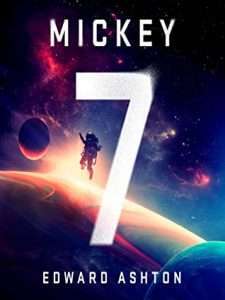 The premise starts with Mickey Barnes, the titular Mickey7. He is the seventh iteration of himself—a clone of a clone, and so on. “Mickey7 is an Expendable: a disposable employee on a human expedition sent to colonize the ice world Niflheim. Whenever there’s a mission that’s too dangerous—even suicidal—the crew turns to Mickey. After one iteration dies, a new body is regenerated with most of his memories intact.” Do you need someone to take a fatal dose of radiation, try out an experimental vaccine, or introduce themselves to a non-friendly planet entity? Mickey is your guy. That is why he gets paid the big bucks… errm. That is why he gets all the food! Wait, that isn’t it either…Moving on.
The premise starts with Mickey Barnes, the titular Mickey7. He is the seventh iteration of himself—a clone of a clone, and so on. “Mickey7 is an Expendable: a disposable employee on a human expedition sent to colonize the ice world Niflheim. Whenever there’s a mission that’s too dangerous—even suicidal—the crew turns to Mickey. After one iteration dies, a new body is regenerated with most of his memories intact.” Do you need someone to take a fatal dose of radiation, try out an experimental vaccine, or introduce themselves to a non-friendly planet entity? Mickey is your guy. That is why he gets paid the big bucks… errm. That is why he gets all the food! Wait, that isn’t it either…Moving on.
Mickey7, having dealt with six violent or gruesome deaths, has a better idea of what death is than anyone else in his colony. Furthermore, because humans have different views of death, many in his colony shun him or want to sleep with him. It makes for odd working conditions for him. He is either reviled or secretly worshipped, and not a whole lot in between.
While out on a scouting mission with his best friend, Mickey takes a tumble into a ravine through pure bad luck. It would be difficult to get him out, his friend tells him to open a vein and he would see him soon. Mickey is truly touched by the care that his friend is showing him in what could be his final moments. But Mickey stumbles along, for once refusing to die, and makes it back to the base colony. However, Mickey8 had already been created and had all his memories downloaded into his skull.
The colony and society have rules regarding the number of clones in existence, 1. It is also very biologically expensive to create new humans. It takes a lot of potential calories to create muscles and bones. On the colony calories equal currency. When Mickey7 meets Mickey8, they decide that neither would like to die, and they will work together. But this leads to a mountain of philosophical and practical problems. The story repeatedly asks, if we are not our bodies, are we still us? It is not new territory, any clone story has to eventually ask this question. But I like that in Mickey7, it is asked subtly. Mickey7 does not ponder life’s meaning while staring into the yonder, he is too busy working and trying to stay alive another day. But the undercurrent of that idea is there.
The Mickeys work to keep themselves out of the recycler. The recycler is where anything biological is thrown to melt down and recycle to be used again in some capacity. A threat that is hanging over their heads like the sword of Damocles. But, staying out of the recycler is the least of Mickey’s issues. They are not the only creatures on this planet, and things are about to get way more interesting for this couple of clones.
Mickey7 is a super fun book to read; there isn’t a lot of development. The period it takes for the story to take place is relatively short and thus doesn’t allow for any solid growth for Mickey. The story is more of the Mickey’s escaping one problem to throw themselves into another, very much like a kamikaze pigeon bouncing against cars on the freeway. But the way that Mickey is written is rather charming. He is a rather affable fellow who loves history, his girlfriend is written as someone who loves him despite his neurosis and his best friend is a chump. But not enough of a chump to be the antagonist of the story. Mickey is just a normal dude, thrust into unique circumstances time and time again.
I would certainly recommend this to those looking for some light science fiction. The idea of an expendable was enough to cinch it for me. Check it out.
Read Mickey7 by Edward AshtonThe post REVIEW: Mickey7 by Edward Ashton appeared first on Grimdark Magazine.
May 14, 2022
An interview with Adam Oyebanji
Adam Oyebanji works in counter-terrorism by day, and writes by night. His debut science fiction novel Braking Day about everything that could possibly go wrong when a generation space ship slows down to approach its final destination came out from Jo Fletcher Books in April (see our review here) – it is a brilliant addition to the corpus. We’re thrilled that Adam took out the time from his busy life to have a chat with us about Braking Day, writing and dragons (because, yes, there are dragons of a sort in his space opera and yes, that makes us love it even more)!
 Can you pitch Braking Day in a one-sentence pitch to our readers?
Can you pitch Braking Day in a one-sentence pitch to our readers?
Politics, mystery and a coming of age drama aboard a miles-long generation ship.
What is it that draws you to space opera specifically?
I hesitate to say this in front of an audience of grimdark aficionados, but I love the optimism of it. Even if the story is dark, the fact that it’s in space, kind of means we made it as a species. We fixed global warming, didn’t nuke ourselves, avoided a return to the Middle Ages, and developed kick-ass tech that got us off the planet. Humanity is going places! What’s an oppressive interstellar empire and ruthless clone army compared to that?
On your website you say that you’d travel into the future rather than the past if given the choice – so a question about the future is in order: where do you hope science fiction will be in a decade? What developments are you hoping for?
I think, as different kinds of people start to slip past the gatekeepers and into publishing, we’ll get a wider, a richer, array of stories to choose from, which will be great for everybody, especially readers. I saw the movie CODA the other day and it was awesome. That movie, that story, would never have had a chance 10 years ago. Now I can go see that and the latest Marvel blockbuster. More CODA doesn’t mean less Marvel. SF will be the same, I hope. More stories. A lot more.
Also, ebook brain implants, so I can download and read without having to bother with hands.
What has been the greatest joy in your journey to publication?
Working with people who want your book to be the best it can be. Joy is absolutely the right word. Writing, for me anyway, is a pretty solitary endeavor. So, when you suddenly find yourself in conversation with people who’ve read what you’ve written, believe in what you’re trying to do, and want to help you do it, it’s an incredible feeling. Like thinking you’re alone in the world and suddenly stumbling into a beautiful city.
How do you plan to celebrate the release of Braking Day?
Because the world is more grimdark than I would like, I don’t think I’ll have time to do much of anything. My day job is financial counter-terrorism, which means, among other things, that I’m one of those people who make the sanctions you hear about on TV actually work. With the situation in Ukraine being as it is, my colleagues and I are working 16/7 right now. On the plus side, no one is trying to drop munitions through the roof of our homes. Hopefully I will get to crack a bottle of champagne with the family before stumbling off to bed!
Is there something that has taken you by complete surprise during the writing or editing process?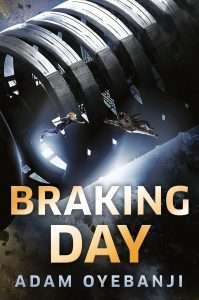
“Next level” is an overused term, but a good agent and editor can really get you there. I had no idea how much they can help you craft your story. What you submit to the agent and then publisher as your manuscript is not the last word by a long shot. My agent and editor had a ton of great suggestions for tightening things up and diving deeper into certain characters and plotlines. I will be forever grateful to them. The final product is so much better than the original draft.
Do you have any advice for aspiring authors to juggle writing with a demanding career?
It’s a cliché, I know, but you have to make the time to write. And time isn’t free. Something else has to give. For me, it’s TV. And admin. Right now, I really should be doing my taxes and getting someone in to fix the washing machine. If you wait until everything else is sorted before hitting the keyboard, you are unlikely to get anything done.
Without going into too much details because spoilers, but I loved that you included dragons of a sort in your book. What are some of your favourite literary dragons?
Smaug from The Hobbit, has to be in there. That book was read to me as a child, and while he wasn’t the first dragon I’d come across, he was the first one who had real character, as opposed to being slain by the charming prince in a couple of paragraphs. Then there’s Saphira from Eragon, where the dragon is not only (shock horror) good, but also a major character in her own right. And lastly, one of the oldest of them all, the unnamed dragon in Beowulf. It terrorizes far and wide because someone stole a cup from its hoard and then takes a mortal chomp out of our hero. It may have been slain in the end, but it got its licks in first!
What are the three items you’d make sure to bring from Earth onto a generation ship?
Ooh, this is like the end of that movie, The Time Machine, where Rod Taylor takes three books back to the future to help him rebuild civilization, but no one sees which ones he picked! Let’s see… This is a serious question. There’d be chocolate. There’d have to be chocolate. And then maybe some more chocolate. And finally, chocolate.
What books or other media have filled your creative well recently?
I’ve been catching up on some military space opera that I missed the first time around. I’ve been reading Jack Campbell’s Lost Fleet series, starting with Dauntless, and I’ve just finished Planetside, the first in a trilogy by Michael Mammay. And right at the moment, for a complete change of pace, I’ve picked up The Gossamer Mage by Julie Czerneda. I fear I’m never going to look at pens in quite the same way again.
Read Braking Day by Adam OyebanjiThe post An interview with Adam Oyebanji appeared first on Grimdark Magazine.
May 13, 2022
REVIEW: Braking Day by Adam Oyebanji
Braking Day by Adam Oyebanji is the sort of science fiction that keeps readers on their toes throughout. Set on a generation ship on the way to what is intended to be salvation, the story is centred around the titular Braking Day. This is the mid-point in the journey, where the ship starts slowing down rather than accelerating in preparation for their destination. But in this case, this is where things go wrong. Set around a young engineer, it is a fast-paced story, blending classic space opera with elements of a psychological thriller and playing with both the reader and the characters’ minds, creating a strong sense of the uncanny.
 Ravinder MacLeod is in the middle of this story. He knows Braking Day means there is no going back – once the brakes are on, for better or worse, their course is set. This is a source of anxiety for him, as he quite liked his status quo, where he was able to ignore some of his personal anxieties. But now shit’s getting real, and as the story progresses, Ravi is torn between his role as an engineer within the Archimedes’ officer corps and his humble origins – especially his cousin Boz, who may be brilliant and ambitiously creative in her own experiments, but also an ex-con. I especially liked Boz, with her no-nonsense attitude and inventiveness, but Ravi himself was a great character as well.
Ravinder MacLeod is in the middle of this story. He knows Braking Day means there is no going back – once the brakes are on, for better or worse, their course is set. This is a source of anxiety for him, as he quite liked his status quo, where he was able to ignore some of his personal anxieties. But now shit’s getting real, and as the story progresses, Ravi is torn between his role as an engineer within the Archimedes’ officer corps and his humble origins – especially his cousin Boz, who may be brilliant and ambitiously creative in her own experiments, but also an ex-con. I especially liked Boz, with her no-nonsense attitude and inventiveness, but Ravi himself was a great character as well.
The world building in Braking Day was stellar. Not only did the generation ship Archimedes feel like a community and a world with distinct cultures, but each of the ships that Ravi encounters along the story does too. There are clear remnants of Earth culture that have survived through the generations – the Archimedes has been on its journey for over 130 years – but also elements that have developed out of that contained environment into something truly its own. And I thought it was brilliant how different each of the ships was, which really helped my sense of immersion. Oh, and there are space dragons. Of a sort. So that’s absolutely awesome!
In Braking Day, Adam Oyebanji manages to write a strong debut. The reader, along with Ravi, is unsure about which parts are real and which aren’t as events unfold. It is a fast-paced, but still character driven story, full of action and compelling twists. Oyebanji is definitely an author to watch – his next book will be a spy thriller, so a very different genre – and I am very curious to see where his writing career takes him. I’m a fan.
Read Braking Day by Adam OyebanjiThe post REVIEW: Braking Day by Adam Oyebanji appeared first on Grimdark Magazine.
May 12, 2022
REVIEW: The Book Eaters by Sunyi Dean
The Book Eaters by Sunyi Dean starts with a twenty-nine-year-old being refused booze at a corner shop because she does not have ID. As a young looking twenty-nine-year-old who still gets carded on a regular basis, that made me fall in love with the book instantly. But Devon isn’t your ordinary woman. She is a book eater. Humanoid, but not human, they devour books as sustenance. And that is written beautifully. One passage that stuck with me is when one if the characters eats a book on the page: “He wrested free his emergency book, […]. Flashman novel, his favourite kind of comfort food. Bit through a corner, pleased by the creamy texture of the pages. Gunfights and sex sizzled on his tongue.” It combines the imagined physicality of books as flavours with the spice of plot elements, and that makes my story-loving heart sing and my imagination go wild with excitement. The Book Eaters is one of those books that doesn’t come by very often, magical and mundane at the same time, hitting all the right spots.
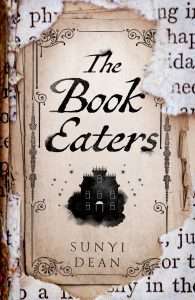 There are six families of book eaters, and Devon is part of the Fairweathers. Family is a central element of the book as everything Devon does is motivated by her role as a mother, both actively taking care of her son Cai and in a more abstract role with her daughter Salem, taken away to be raised by others. It is a story of how far to go for the ones you love. Within the book eaters, there seems to be a lack of women. Which is very visible in the way Devon is treated by the rest of the families – both as a lesser member, and one that is highly needed for breeding. And I use breeding here on purpose. She is supposed to create the next generation of female book eaters – and when she gives birth not only to a son, but a mind eater, a variation of their kind sustained not by books but by minds, thoughts and souls of humans, she has to fight to break him out of the vicious cycle of tradition.
There are six families of book eaters, and Devon is part of the Fairweathers. Family is a central element of the book as everything Devon does is motivated by her role as a mother, both actively taking care of her son Cai and in a more abstract role with her daughter Salem, taken away to be raised by others. It is a story of how far to go for the ones you love. Within the book eaters, there seems to be a lack of women. Which is very visible in the way Devon is treated by the rest of the families – both as a lesser member, and one that is highly needed for breeding. And I use breeding here on purpose. She is supposed to create the next generation of female book eaters – and when she gives birth not only to a son, but a mind eater, a variation of their kind sustained not by books but by minds, thoughts and souls of humans, she has to fight to break him out of the vicious cycle of tradition.
In that, The Book Eaters addresses issues of ableism that mirror those present in our world. Cai initially is refused a name by his father. He is shunned and to be sent away because he is born different. And essentially this leads to Devon’s separation from everyone and everything she had known – and catalyses events both extreme and entertaining for everyone who has ever experienced ableism. Because she is a mother, and it is no question to her that her child is more important than traditional prejudice.
The story is told with an abundance of dry wit, which draws the reader in. It is a fairly slow-paced book, but one rife with character exploration. Due to its focus on characters and immersive world-building, it doesn’t matter that the plot is slower, as it gives the story room to breathe, to capture the reader’s full attention. This is one of those books that you don’t devour, but savour slowly (despite the ARC’s instruction to devour it…). It is also a book for book lovers, having each chapter introduced by a different quote from literature, and making you think about how it relates to the events at hand. I adored this book, and I hope you will too. An easy five stars from me.
Read The Book Eaters by Sunyi DeanThe post REVIEW: The Book Eaters by Sunyi Dean appeared first on Grimdark Magazine.
May 11, 2022
REVIEW: Bigfoot Hunters by Rick Gualtieri
Bigfoot Hunters is the first horror novel by Rick Gualtieri after a successful career as an urban fantasy and comedy writer. I was expecting something more like his Bill the Vampire series when I first heard this book announced rather than what I actually got: which is a literary slasher novel. Even the title is misleading because the cryptid hunters are not a group of badases prepared to take down a yeti. They are closer to a bunch of nature show enthusiasts who are badly outmatched by the events going on.
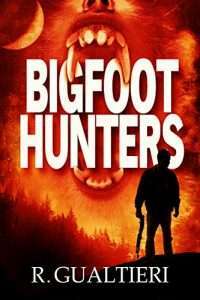 The premise is a typical slasher movie setup: a bunch of horny college students are going to the middle of the woods in order to find excuses to bang (or even do away with the excuses). Once there, they soon find themselves being stalked by a Bigfoot. Much to their surprise, they are rescued by a group of cryptic hunters. Unfortunately, what they think is a small problem with a lone predator swiftly turns into an enormous horde that makes 30 Days of Night look tame.
The premise is a typical slasher movie setup: a bunch of horny college students are going to the middle of the woods in order to find excuses to bang (or even do away with the excuses). Once there, they soon find themselves being stalked by a Bigfoot. Much to their surprise, they are rescued by a group of cryptic hunters. Unfortunately, what they think is a small problem with a lone predator swiftly turns into an enormous horde that makes 30 Days of Night look tame.
Bigfoot Hunters goes with the premise that sasquatch are normally quite peaceful and not a creature that would ever attack humans. These ones are suffering from a condition that has driven them mad and made them predatory. It’s an interesting take on a slasher movie monster and adds a small bit of sympathy to the creatures that are otherwise horrifying as well as relentless killers.
Much effort goes into the world-building of how sasquatch has been able to keep hidden from mankind for the entirety of human history. It’s not that believable but Rick Gualtieri still makes the attempt and for that I appreciate it. The cryptid hunters of the United States government are more like park rangers than dedicated monster hunters as well. They even have the cute job of running a show that seeks cryptids on television but is actually a cover for making them look fake.
Despite this cute premise, this is definitely in the horror genre rather than urban fantasy. The sasquatch are shown to be genuinely terrifying and there is a massive body count among the characters. Not just the ones you’d think would die, die too. No, this is a fairly brutal bloodbath and entirely worthy of Friday the Thirteenth or Halloween-style massacres. It actually feels like two separate 1:30:00 long horror movies, really, and that’s good value for my money.
The characters are a mixture of likable, dislikable, and in-between with Rick wisely making sure that they feel authentic even if they’re jerks or not. There are no heroes or villains but there are people who are brave versus those who are scummy. The body count doesn’t particularly favor one side or the other either. At least at the start.
Big Foot Hunters is notably not part of Rick Gualtieri’s Bill the Vampire universe despite the large role that sasquatch play in those books. Furthermore, they are entirely different from the spirit animals in that setting. It kind of makes me wonder what novels about those creatures would have been like. Still, I really enjoyed this one and recommend it for people who love trashy horror movies but intelligently written. This is a bit like Cabin in the Woods in that respect. I listened to the audiobook version and have to say I recommend it over the Kindle version, though both are excellent.
Read Bigfoot Hunters by Rick GualtieriThe post REVIEW: Bigfoot Hunters by Rick Gualtieri appeared first on Grimdark Magazine.
May 10, 2022
REVIEW: Age of the Undead by C.L. Werner
The zombie genre has become a lot like its subject matter – often shambling, lifeless and stale. Age of the Undead, by C.L. Werner, successfully navigates the familiar waters of a zombie apocalypse by mashing up undead infection with a classic sword and sorcery fantasy tale. Based on the Zombicide series of board games, specifically the Black Plague setting, Age of the Undead is an enjoyable and fast paced journey through a world that feels familiar but not overly cliched.
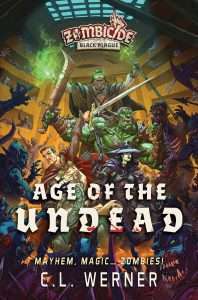 Age of the Undead hits the ground running in the prologue. Werner could have taken us step by step through the plague’s beginnings, but instead walked us through that build up in a single chapter. While the former would have been a grand epic, Werner instead chose to keep things tight, which works perfectly with the pacing of the rest of the book. The prologue also sets an appropriately grim tone as it takes us through the malign necromantic ritual that unleashes the plague and the lightning spread leading to the collapse of the kingdom.
Age of the Undead hits the ground running in the prologue. Werner could have taken us step by step through the plague’s beginnings, but instead walked us through that build up in a single chapter. While the former would have been a grand epic, Werner instead chose to keep things tight, which works perfectly with the pacing of the rest of the book. The prologue also sets an appropriately grim tone as it takes us through the malign necromantic ritual that unleashes the plague and the lightning spread leading to the collapse of the kingdom.
Age of the Undead is constructed from tropes built upon tropes but rather than feeling lifeless and derivative Age of the Undead makes that work in its favor. Age of the Undead draws inspiration from Lovecraftian horror and D’n’D-esque high fantasy along with zombie apocalypse faire such as Dawn of the Dead and the more recent Army of the Dead. There were a few moments that even reminded me of DC Comics’ DCeased series. The plot holds few surprises, but Age of the Undead is about the journey, not the destination. The characters, while archetypal, are likeable and have personality. There’s nothing new about a knight seeking to avenge his family or a kind hearted rogue, nor is there anything new about a ragtag group pulling together and forming unlikely bonds. Nobody is trying to reinvent the wheel here but that doesn’t take anything away from Age of the Undead’s entertainment factor or the quality of C.L. Werner’s writing.
That said though, what makes Age of the Undead interesting is the strength of the fantasy/zombie mashup along with the new ideas it does bring to the table. Some of those ideas actually come from the Zombicide board game series, while some are the author’s own. Despite wearing its influences on its sleeve, the book still managed to pull off a few “oh shit!” moments that I didn’t see coming. Happily, the last few chapters also took an unexpected “oh shit” detour, concluding Age of the Undead with a tone as grim as how it began.
3/5
Read Age of the Undead by C.L. WernerThe post REVIEW: Age of the Undead by C.L. Werner appeared first on Grimdark Magazine.
May 9, 2022
REVIEW: Black Tide by K.C. Jones
Black Tide is the debut novel from K.C. Jones that brings together the “human car wreck” of Beth, and Mike, a depressed movie producer, at the end of the world. This is a small-scale, focussed sci-fi horror that plays out primarily on a deserted beach in the Pacific Northwest during off season. Our two misfits get trapped after a peculiar meteor shower by lost keys and terrible maws full of razorblade teeth that emerge from nowhere.
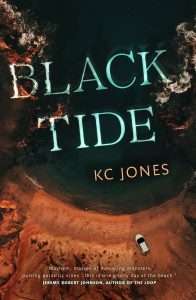 Black Tide gives off some 1980’s sci-fi movie vibes (think Alien, Predator) and has some great sections that accentuate this style:
Black Tide gives off some 1980’s sci-fi movie vibes (think Alien, Predator) and has some great sections that accentuate this style:
“There she is. The queen. Poised on the ridge, jaws open, tongue-worm surveying the beach. ‘Mama’s awake,’”
On top of this the novel is quite self-aware of its 80’s movie echoes; no sooner had the comparison with Alien popped into my head than one of the characters name-drops Ellen Ripley.
“Sorry, humanity. You needed a Sarah Connor, or an Ellen Ripley, or even a Katniss Everdeen. You got me.”
What our budding femme-fatale forgets is that all these badass ladies didn’t start out that way but did the best they could to survive against the odds, and that is exactly the sort of situation that Beth and Mike find themselves in with Black Tide. A large part of the story has a clear focus on human resilience, fortitude, and survival; seeing the human tragedies that were Beth and Mike evolve into something more in the changed world they woke up to.
The book nods to the movie world in a few other places, which should be expected with a producer among our very small cast, and it feels like Jones is writing what he knows for his first novel (he graduated with a degree in Film Production, after all). As such it makes Black Tide feel cinematic and something I could certainly imagine getting optioned for a feature film. One possible drawback to this is that, yes, it has a healthy dose of Hollywood-style hope thrown in there towards the end (that Mike even pre-empts in a very meta commentary on what he’d want if the situation were a script he’d read). If you’re looking for a dark ending where everyone is ripped apart by monsters, this won’t be the book for you.
Black Tide isn’t exactly your typical alien invasion story either and it shines for it, adding a bit of cleverness into the mix that you don’t always see that offers an opportunity for a bit of deeper thought. It all takes place on what we might term ‘day zero’ and leaves to your imagination the fate of humanity at the end, nevertheless the narrower focus of the story makes for some tight, tense moments and allows the growing badassery of Beth and Mike to show through.
All-in-all, Black Tide is a focussed sci-fi horror character-study at the end of the world, replete with invisible aliens, dismembered cops, and a faithful hound to protect. Jones has created a cinematic novel with just the right amount of horror and fight to it that will give you some nostalgic feeling and make you think.
4/5
Read Black Tide by K.C. JonesThe post REVIEW: Black Tide by K.C. Jones appeared first on Grimdark Magazine.
May 8, 2022
An Interview With David Towsey
David Towsey is the author of the upcoming Equinox novel, The Walkin’ trilogy, and one-half of the creative partnership of D.K. Fields. Equinox, David’s newest release takes place in a world where every human body contains two distinct identities – a day brother and a night brother. One never sees the light, the other nothing of night.
David sat down with GDM to discuss his writing, computer games, the nature of binaries, and his love of ice cream. Thank you for sitting down with us and having a chat.
[GdM:] In case people are not familiar with your work, could you tell us about yourself?

Sure thing. I write novels, short stories, and indie computer games – mostly in the SFF genre. I guess I blend a lot of genre elements in what I do; my first novels apparently cornered the market on literary zombie-westerns. My next release, Equinox, is a mix of dark fantasy, folk horror, and witch-hunts with a strong SF-style “what if?” at its core. Game-wise I’m one half of Pill Bug Interactive, and we’ve released three games so far across Steam and Nintendo Switch . I’ve also co-written a fantasy-crime trilogy under the pseudonym D.K. Fields. I think it’s fair to say I like to mix things up.
. I’ve also co-written a fantasy-crime trilogy under the pseudonym D.K. Fields. I think it’s fair to say I like to mix things up.
[GdM:] I read that you are an ice cream man, is that still the case?
Ice cream is not just a dessert, it’s a mindset. Especially once you accept pistachio flavoured ice cream into your life.
[GdM:] I read that you enjoy computer games and MMOs and that you play Magic: the Gathering at a competitive level. As a game geek myself, I would love to hear more about that.
Oh wow, you have done your research! I actually stopped playing MMOs a few years back, around the release of WoW’s Mists of Pandaria. I still have a lot of love and respect for that form of gaming, but I just couldn’t give it the time and dedication I wanted to. I’ve also hung up my Magic slinging boots (not sure that metaphor works, but I’ll run with it). When my partner and I moved to Cardiff in 2016 we got involved in the local board gaming scene. We met loads of lovely people, played so many great games, that I didn’t find myself driven to keep up with Magic.
But when the pandemic hit, like many folks my work went solely online so I was in front of the screen even more than usual. I picked up an old, old hobby of mine in miniature painting. Mostly Games Workshop, but some 3D printed stuff to. It was a lot of fun getting back into that and seeing how far the hobby had come since I was a kid (YouTube painting videos are amazing!) That inevitably led to playing miniature games, and I’ve just started to get into tournaments for Age of Sigmar… once a tournament gamer, always a tournament gamer, I guess.
[GdM:] I read an interview you did where you were asked about your introduction to genre fiction being The Hobbit. I think many of us had similar experiences. Are there any other books out there that had profound influences on you as a reader?
So many, it’s hard to narrow it down. Perhaps one of the biggest influences for me as a reader and a writer would be Richard Matheson’s I Am Legend. I love so much of his work, but this book in particular opened my eyes to a certain kind of horror writing. For many readers in the 1950s and 60s, he brought horror to the suburbs and showed it could exist outside places like Dracula’s castle. Even decades later, as a young reader I experienced that powerful effect which brought horror home, and it stayed with me. I don’t necessarily write horror in the purest sense (though, I suppose that’s open to debate). But I think my interest in the genre is firmly rooted in the family and domestic spaces.
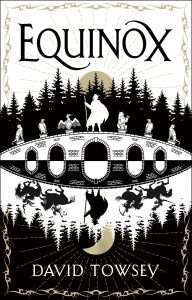 [GdM:] As one half of the Pillbug Interactive duo, you’ve written for games such as Make It Home, Cycle28, and Intelligent Design. What would you say the difference is between writing a great book and writing a great game? Do you have any techniques that only work for one or the other? Is there anything that surprised you by working well in both media?
[GdM:] As one half of the Pillbug Interactive duo, you’ve written for games such as Make It Home, Cycle28, and Intelligent Design. What would you say the difference is between writing a great book and writing a great game? Do you have any techniques that only work for one or the other? Is there anything that surprised you by working well in both media?
I think it’s really important to respect each form of writing on its own terms, even though there are often crossovers. It’s dangerous to assume because you can write in one medium, it’s going to be easy to write in another. So, I went into games knowing I had a lot to learn, and as open-minded as possible. One of the most obvious differences between books and games is that for most games “writing” is only part of how a story is told. There are so many other factors: visual story-cues, game play mechanics, user interfaces, sound effects and music – the list goes on. This can be quite a shock for a fiction writer who is used to having almost complete control over their story. It can feel like a steep learning curve. But the good news is: some skills do translate. I’m quite a dialogue-heavy writer, and this helped a lot with writing for games; more often than not you’ll be writing dialogue, rather than full scenes or description. If you can craft an economic conversation that covers some key story beats, without it feeling too wooden or forced, that’s a great start for game-writing.
[GdM:] Could you tell us a bit about the Bath Spa Creative Writing Masters program?
In short: I had a blast on my MA. I was one of the youngest of the cohort, coming almost directly from my BA in Creative Writing at Aberystwyth, and it was brilliant to be around such a diverse group of driven writers. There was a huge variety of projects people were working on – in prose, poetry, and other mediums. It was a really good energy to be immersed in for someone trying to write their first novel. I started Your Brother’s Blood on that course, and have a lot of people to thank for how it turned out (don’t worry, they all appear in the acknowledgements).
[GdM:] How has the program helped you as a writer?
I’m sure their website would tell you the particulars, but my experience of the program was of learning a lot about writing in a very intense year. I’d already started to grasp how scenes were constructed, how and when to be economic with language, and how important voice was to a story; but it wasn’t until my MA that I felt confident in applying these ideas to my own novel-length project.
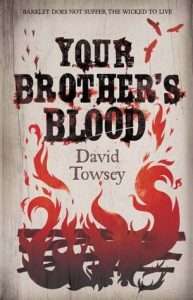 [GdM:] You have a Ph.D. in creative writing, what was your dissertation on?
[GdM:] You have a Ph.D. in creative writing, what was your dissertation on?
The critical element of my thesis explored representations of absent parents in SF novels. In one chapter I did a close reading of Matheson’s I Am Legend through the lens of Attachment Theory – as I mentioned earlier, it’s a novel that had a big impact on me as a reader. The creative element of my Ph.D. was a novel called The Orbital Son. The theme of absent parents in the critical thesis carried over to the novel, which follows a young man as he tries to reconnect with his dying father. It’s not the most subtle thing I’ve ever written, but I learned a lot writing it.
[GdM:] What was your experience with language and writing where you discovered just how powerful it can be?
As a reader, I’d say it was reading The Hobbit as a kid, which you mentioned earlier. I was on a holiday, stuck in a car with my grandparents for hours on end. I was amazed that words on the page could take me away from that hot, stuffy car and put me in a totally different world. As a writer, I didn’t have much confidence in my own ability to do that until readers started commenting on the particulars of Walkin’ characters, as if they were real people. I’d managed to use language to get readers to think about living on after death, about poking your own spleen through a hole in your chest, and how a father might convey this all to his daughter. That felt pretty powerful.
[GdM:] When you are writing a story do you start with an idea, such as “what it would be like to live forever” for example in Your Brother’s Blood? Or do you start with a character such as Christopher Morden from Equinox and go from there?
I’m definitely an ideas-led writer. I start with a concept that might make for an intriguing set-up, and then start exploring what stories feel like a good fit for it. With the Walkin’ Trilogy that was, as you say, about how the burden of living forever might affect a family. In a sense, it’s a kind of family saga told over three books rather than one big one. For Equinox, the two-people in each body concept changes so much, I could have told a thousand different stories. But it led me down some pretty dark paths from the get-go. The idea of one half of a witchfinder falling in love with a suspect, while the other half tries to convict them really appealed as a way to link concept and story.
[GdM:] The Walkin’ Trilogy is a zombie-western and has a very different feel, it is much sparser in prose, then Equinox. Was that a conscious choice or was that how the writing evolved organically?
It wasn’t a conscious choice to make that change. The voice of both books was led by their respective worlds. We talk a lot as SFF writers about worldbuilding, but it’s a conversation often dominated by things like social or power structures, magic systems, that kind of thing. Not so much about voice or tone. When I write, I want my prose to feel part of that world. Sparse, staccato prose for the Walkin’ Trilogy’s western landscape sounded right to me. Equinox is looser, and maybe denser, to reflect the thick forests surrounding Drekenford – and the slightly claustrophobic nature of that village.
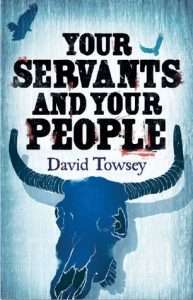 [GdM:] How do you feel about SFF as a genre in 2022? Where do you see the genre branching off to in the future?
[GdM:] How do you feel about SFF as a genre in 2022? Where do you see the genre branching off to in the future?
I think SFF is in a positive place right now. It’s such a broad genre, or group of genres, that there’s work being published for a wide range of readerships and tastes. The diversity of voices is improving, but it’s fair to say there’s still a way to go on that front. I hope that more writers and readers coming to SFF will branch the genre in ways that I can’t even imagine – which is the whole point, isn’t it? It’s a playground for sharing our individual, esoteric imaginings of the future.
[GdM:] You write as one half of the creative partnership D. K. Fields with poet Katherine Stansfield. How does your partnership work? Do you jointly talk about every aspect of the story, or do you take chunks of things then combine them?
It was messy. At least, it started that way. Neither Katherine nor I had co-written anything before. When we started Widow’s Welcome – the first book in the Tales of Fenest Trilogy – we took an admirable, yet naïve, set of decisions to make the process as democratic as possible. We each wrote a chapter of the same story, passing the manuscript back and forth. When we had a full draft, we even line edited together in a Google.doc, facing each other at the same table on two laptops. Many arguments ensued about commas and the like. By the time the trilogy was finished, we’d worked out a smoother but still equal process… and we haven’t written together since.
[GdM:] Could you tell us about your upcoming release, Equinox?
It’s a dark fantasy story about a witchfinder, Special Inspector Christophor Morden, who is sent to a remote village to hunt a witch. A man has clawed out his own eyes, driven to do so by teeth growing in his eye sockets, and sorcery is the suspected cause. But in this world every physical body has two people inside it: one day-sibling, one night-sibling. So, Christophor’s day-brother, Alexsander, has no choice but to accompany him on this witch-hunt. As the investigation leads one brother closer to his witch, the other finds himself falling in love with a prime suspect.
[GdM:] How did you come up with the idea of a day sibling and night sibling?
In a strange way, I have Katherine to thank for the initial spark for this idea. She was taking a nap one day in a chair near a window and her face was almost perfectly half in shadow, half in the light. Seeing this happened to coincide with some things I was working through personally about why we’re strong in some ways and vulnerable in others. The image of her face “split” by light and shadow crystalised this duality in that moment, and I found myself imagining how I might push it to an extreme. Two different people in one body, each strong in some ways but vulnerable in others, seemed like an interesting concept to explore.
[GdM:] Is it fair to say that the concept of binaries is an important part of Equinox? I appreciated that in the story people are more complicated than “good/bad” or “black/white” but that they are shades of gray.
I think the core binary of night-day sibling is essential to Equinox. But I wanted to explore the very idea of binaries in the book. I liked the irony of a novel that presented as black-and-white (and Head of Zeus did a wonderful job on the cover in this regard) but was actually a story about the complications and nuances that are part of any binary, if you just scratch the surface. It’s not a new idea, and many better writers than I have examined this in far more significant contexts. The most I can hope for is that Equinox gets one or two readers thinking about the nature of binaries.
[GdM:] I hear that you write to music. How do you pick the music for the novel, does the playlist go along as things change? What was the playlist for Equinox?
I do indeed write to music. I construct a playlist for each project, with songs taken from a fairly wide variety of artists. The emphasis is, again, on tone. What kind of mood do I want to put myself in while writing? Sounds obvious, but like a lot of people music has a huge impact on how I feel in any given moment. The playlist for Equinox was pretty bleak. Songs from artists like Mazzy Star, Alice in Chains, and Elliot Smith featured heavily. But even more “upbeat” artists have songs that felt right for some of the darker elements of Equinox – bands like The Mars Volta, Fleetwood Mac (of course, Rhiannon had to feature), and Coheed and Cambria. It’s all stuff I’d listen to anyway, but brought together to set the tone in the background as I write.
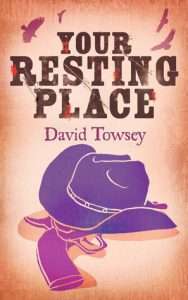 [GdM:] You released Your Brother’s Blood in 2013, the first novel of The Walkin’ Trilogy. What lessons have you learned since then regarding your writing workflow? Was Equinox easier to write than Your Brother’s Blood?
[GdM:] You released Your Brother’s Blood in 2013, the first novel of The Walkin’ Trilogy. What lessons have you learned since then regarding your writing workflow? Was Equinox easier to write than Your Brother’s Blood?
I wish! Equinox was perhaps the most challenging book I’ve ever written – and that includes learning to co-write. The technical issues caused by having two personalities for every character when trying to plot a kind of crime investigation… do you know that Charlie Day conspiracy board meme? It became a kind of totem animal when drafting Equinox. I very nearly lost it on that book. That said, perhaps the biggest lesson I’ve learned since 2013 is that I revel in the challenge. If writing feels easy, I don’t trust it. I have keep pushing myself, like a shark has to keep swimming, otherwise, I’m sunk.
[GdM:] What things do you have coming up?
Well, the release of Equinox is keeping me pretty busy at the moment. But the next novel project is in the research and planning stages, so that’s starting to feel exciting. I can’t say too much yet, only that it will be another blend of fantasy and horror that puts some fairly unusual elements together. Pill Bug Interactive is similarly in the early stages of our next game. And who knows, maybe D.K. Fields will “get the band back together” for another series. It’s an energising time, full of creative possibilities.
Read Equinox by David TowseyThe post An Interview With David Towsey appeared first on Grimdark Magazine.



